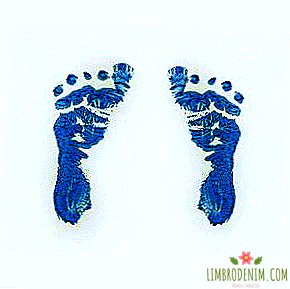Story of one brand: Jonathan Saunders
There are many brands in the world, which we love from and to - with all their ups and downs. We hunt for their stuff, ready to buy all the rail on the sale and look forward to showing new collections. It's time to figure out what the phenomenon of their attractiveness. This week we are talking about the British Jonathan Saunders, whose nominal brand celebrates its tenth anniversary this year - the period during which the Briton managed to build one of the most commercially successful young brands in Britain.

Ten years ago, Jonathan showed his first collection autumn-winter - 2003, hitting the bull's-eye: at the beginning of the two thousandth things with prints were gaining popularity, and it was them that he proposed. His first collections, inspired by the graphics and design of the German architectural school Bauhaus, as well as the aesthetics of raves of the 90s, were immediately noticed by critics.
Surprisingly in the biography of Saunders, his passion for colorful prints and the workshop with them arose despite the environment in which he grew up - the designer spent his childhood in the industrial and gloomy Glasgow, in a strict religious family. The house had a Spartan atmosphere, and young Jonathan read the Bible from morning to night, which is important, surrounded by ascetic furniture. In response, Jonathan decides to create beautiful things and enters the Glasgow School of Art in the course of design and design of furniture, but will soon switch to textile printing. The full potential of the designer was already revealed while studying for a master at Central Saint Martins in London on the course of the legendary teacher Louise Wilson. As Jonathan says, while learning, the riot of color and color itself began to manifest itself in his collections. He built a graduation collection around colorful caftans, inspired by the cover of the album "Yellow Submarine" by The Beatles. The young designer notes Alexander McQueen, who proposed Jonathan to design a print for the Alexander McQueen Spring-Summer 2003 collection. Following McQueen, the designer is suggested to design prints at home by Chloé and Emilio Pucci.


Geometric prints resembling a kaleidoscope become the main hallmark of Saunders design. Even in the wake of growing minimalism in 2011, he shows a bright, but restrained and clean collection with prints. The designer is inspired by the patchwork technique, the work of the American artist Kaffe Fassett, the optical sketches of the Dutch graphic designer M. C. Escher and the painting by Mark Rothko. In addition, in his collections architectural, chiseled cut - this is the merit of the school in Glasgow and the experience of a furniture designer. In 2003, Saunders' dress falls on the cover of the British Vogue, and in an interview with the magazine, the designer notes that she works with prints at the level of couture. Two years later, Saunders made his first collaboration with the British democratic brand Topshop, and in 2008 he was appointed creative director of the ready-to-wear line at Pollini. In 2010, he makes a capsule collection for Debenhams, which shatters like hot cakes. Now his things are worn by Anna Wintour (and in addition she praises in the letter of the editor), Sienna Miller, Madonna - and this is not a complete list of Jonathan Saunders fans. As a bonus, in 2012, the designer receives the BFC / Vogue Designer Fashion Fund award in the form of £ 200,000 for the development of the brand.
And I must say, this money was very necessary for the designer. In appearance, the history of the brand's development looks smooth: it is noticed and praised, but in practice everything is not so simple. There is a joke that if you are literally engaged to work, then this is either the main failure of your life, or you are a monarch, a president or a fashion designer. Jonathan is a workaholic, and in many respects it is precisely his passion for his work 24/7 that gave results. Otherwise, how to make 6 collections a year for your own brand, as well as a dozen collaborations and work for other fashion houses?


Starting Jonathan was hard. He himself says that at the beginning of his career he slept in boxes, stole shoes in Italian showrooms, vaguely imagined the idea of the first own show, but mostly he was worried about what to eat and where to sleep. Many young designers, graduates of expensive colleges face the same problems. Think of Thomas Tate, who yesterday had nothing to eat, and today he is the new hope of British fashion and the owner of the LVMH Prize grant. Jonathan says that the success of his brand is largely due to the London fashion community, thanks to the cohesion of which it is easier for young designers to start and express themselves. So he went hand in hand with another Scotsman, Christopher Kane, together they studied, did things they liked, and had not yet thought about commercial success, as well as a whole cohort of young designers from East London who helped each other and who ten years later represent modern British fashion. In addition to Kane, surrounded by Saunders were Roksanda Ilincic, Richard Nicoll, Louise Gray. In 2008, the Saunders case was not shaky, when he was noticed by Sarah Mauer, editor of the American Vogue, recommending the designer to American buyers. So Saunders purchased Neiman Marcus and his business went uphill.
Jonathan is balancing between intelligent and understandable fashion. He himself says that he is very worried about things that are not too far-fetched. The balance designer succeeds. On the one hand, it shows very commercial things: dresses on straps, simple-shaped skirts, pants, coats, jackets are wearable clothes that look incredibly beautiful. Here Saunders remembers that the designer’s success is in the ease of combining his things. On the other hand, he uses expensive fabrics, fine processing (the designer often cuts the fabric with a laser and leaves the edges untreated), a textured combination of different materials, experiments with fabric textures, for example, Saunders lays out silk, organza and Lurex layer by layer). So many are doing today - remember at least the 2015 cruise collections of Mary Katranza and Alexander McQueen, who switched from prints to 3D textures. Everything together makes the Saunders design unique and, therefore, in demand. Today, Saunders makes both men's and women's lines in a new lookbook that he remembers his roots, education, inspirational works of Italian industrial designers of the 70s and ascetic furniture in Glasgow's parental home, which made Saunders out of the shell.




